What is employee experience management: A complete guide to improve your workplace engagement
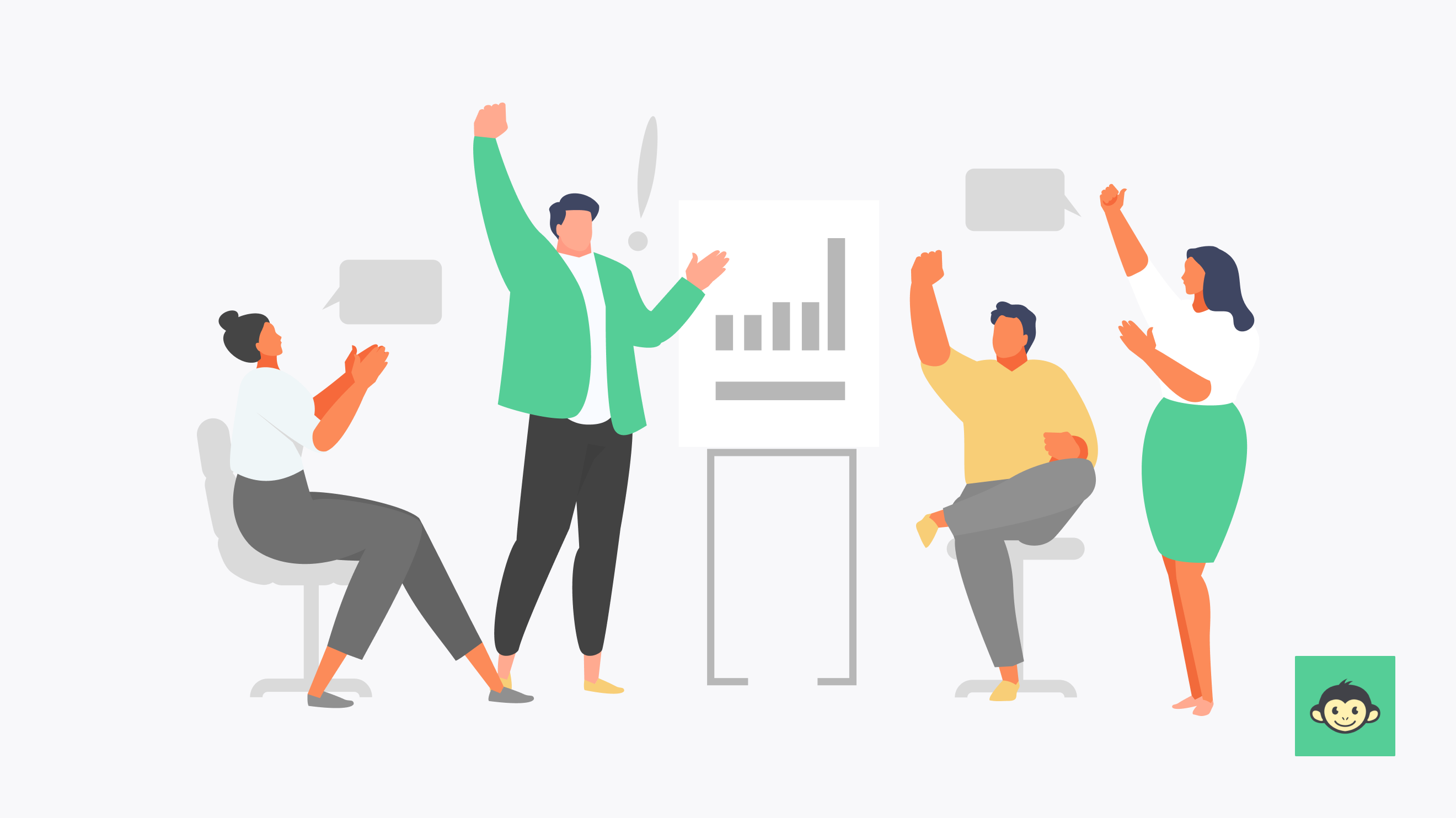
Have you ever wondered why companies send employee experience surveys? Or prioritize employee experience management? Or emphase on this particular question—would you recommend this company to a friend?
The answer is simple, the world is evolving, and so are organizations as they want to retain their top talents while competing with the market. Thus many companies are shifting their focus towards employee experience management software, where employees feel that they “want” to work.
But why employee experience management software? Well, it’s no secret that happy and engaged employees at work are more productive, innovative, and likely to stick around.
And to ensure that is the case, many organizations bring in their “A Game” for employee experience management, where it’s all about understanding what your employees need, what motivates them, and how to provide an environment that allows them to thrive.
To get started with your employee experience management, in this article, we are breaking down all the keynotes you need to know about how effectively ensuring employee experience can positively impact your business outcomes and company culture.
Table of contents:-
- What is employee experience?
- What is employee experience management?
- What are the 4 pillars of employee experience?
- The rise of employee experience
- How employee experience management works?
- Components of employee experience
- Why is employee experience management important?
- What is an employee experience management strategy?
- What are the key stages of the employee experience?
- Employee experience challenges in 2023
- The business impact of employee experience
- How to improve employee experience?
- How to design your employee experience strategy?
- Types of employee experience surveys
- What does an employee experience manager do?
- Employee experience manager qualifications
- How technology enhances employee experience management?
- Conclusion
- Employee experience management FAQs
What is employee experience?

Employee experience is an employee's overall feeling and perception of the workplace. It is a holistic measure of employee engagement and satisfaction that incorporates elements such as company culture, career development, job satisfaction, and overall well-being.
A positive employee experience is one of the most critical factors in retaining talent and contributing to productive and engaged employees. An employee experience begins with an effective onboarding process, which includes providing detailed job descriptions, setting expectations and goals, clearly communicating roles and responsibilities, and introducing team members.
It also creates an environment that encourages collaboration, fosters trust and respect, and provides adequate resources.
Another aspect of employee experience management is career development, which creates the most promising competitive advantage like opportunities for employees to grow in their roles, such as providing additional training, enrolling in specialized courses, and offering mentorship programs.
What is employee experience management?
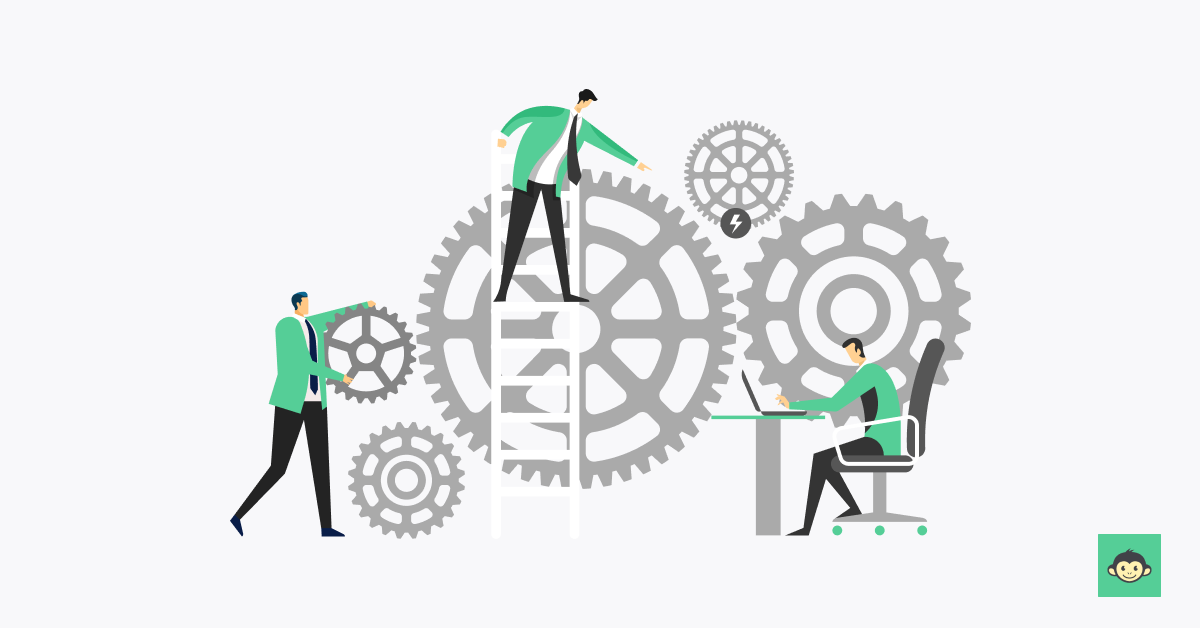
Employee experience management is a comprehensive process of creating exceptional employee experiences in the workplace. It focuses on the whole employee life cycle, from recruitment to separation, and the various touchpoints that make up the employee’s work journey.
The continuous process of understanding, engaging, and optimizing the employee experience helps to create a positive, productive, and meaningful work environment. So, employee experience management involves implementing strategies, tactics, and activities that improve the overall employee experience advantage.
These activities include providing meaningful work, feedback, and resources; offering career development; and creating a culture of appreciation and employee recognition.
Understanding what employees need, want, and expect in the workplace, can help employers create an environment where employees feel valued and supported, leading to higher job satisfaction, improved employee engagement, satisfaction and productivity.
In addition to these core components, employee experience management also involves adapting to changing workplace dynamics. In today's fast-paced world, where remote work and flexible schedules are increasingly common, organizations need to continually evolve their employee experience strategies.
This might include investing in technology that enables seamless remote collaboration, providing mental health support to address the challenges of remote work, and fostering a sense of belonging among employees, even when they are geographically dispersed.
Furthermore, employee experience management extends beyond the physical workplace. It encompasses the entire employee journey, from the first interaction with the company's brand to the post-employment phase.
This means that organizations must pay attention to their employer branding, recruitment processes, onboarding procedures, and even the offboarding experience. A positive offboarding experience, for example, can leave a lasting impression on departing employees and potentially lead to positive referrals and future talent attraction.
Effective employee experience management also requires regular feedback and measurement. Employers should solicit input from employees through surveys, focus groups, and one-on-one conversations to gauge their satisfaction and identify areas for improvement.
Analyzing this feedback and using data-driven insights can help organizations make informed decisions and tailor their employee experience initiatives to address specific pain points.
What are the 4 pillars of employee experience?

Are your employees truly engaged, motivated, and satisfied with their work? Or do they often seem disengaged, unmotivated, and eager to jump ship at the first opportunity? In today's competitive job market, it's crucial for businesses to focus on creating an exceptional employee experience. But what exactly does that entail?
Well, imagine your organization as a four-legged stool, with each leg representing a crucial aspect of the employee experience. These four pillars, when well-structured and balanced, form the foundation of a thriving and productive workforce. Let's delve into them:
1. Cultural alignment:
Picture your company culture as the personality of your organization. It's the shared values, beliefs, and norms that guide how your employees interact and make decisions. When your employees feel aligned with your culture, they're more likely to be engaged and committed to your company's mission.
To strengthen this pillar, ensure your company's values are clear and well-communicated. Encourage open communication and foster an inclusive environment where diversity is celebrated.
2. Physical workspace:
The physical workspace is often underestimated, but it has a significant impact on the employee experience. A comfortable and inspiring office can boost employee productivity and creativity while also contributing to employee well-being.
Consider ergonomic furniture, natural lighting, and flexible workspaces. Allow employees to personalize their workstations to create a sense of ownership and comfort.
3. Career development:
Do your employees see a clear path for growth within your organization? Career development is a critical pillar of the employee experience. When employees believe that their contributions are valued and that there are opportunities for advancement, they're more likely to stay committed.
Invest in training and development programs, provide regular feedback, and offer clear advancement paths. Encourage employees to set and pursue their career goals.
4. Work-life balance:
Now, picture a scale with work on one side and personal life on the other. Maintaining a healthy balance is essential for employee satisfaction. Overworked and stressed employees are less productive and more likely to burn out.
Promote flexible work arrangements, encourage time off, and set realistic expectations for workload. Show empathy towards personal challenges and support employees in achieving a harmonious work-life balance.
The rise of employee experience

Multiple factors have driven the move to an overall holistic strategy for employee experience management. Here are some crucial ones below:
- Digital transformation: Digital technologies have changed the way organizations operate. With the right HR tools, organizations can better track business performance, measure employee performance, and provide better opportunities for collaboration.
- The new generations: The newer generations, like millennials and Gen Zs, are looking for more prospects that lead the companies to have an in-depth understanding of current trends.
- The rise of the gig economy: The gig economy has also led to an increased focus on employee experience platform, as businesses need to ensure that they are attracting and retaining top talent.
- The changing nature of work: The face of work has changed drastically in the last decade with the introduction of more technology, remote working and a flatter organizational structure. This has led to a greater focus on the employee experience.
- The world is not the same: With economic disruption, digitalization, and other crucial factors force companies to expand and be on trend at a rapid pace to thrive against their competitors.
- Increasing competition: Companies today are focusing on their employees to stand out and gain a competitive edge. With the right employee experience software, companies can provide a unique, positive work environment that attracts and retains valuable talent.
How employee experience management works?

Ever wondered how some companies manage to keep their employees happy, engaged, and motivated day in and day out? The secret lies in effective Employee Experience Management (EXM). Let's unravel this intriguing concept in seven key points:
1. Understanding employee journey:
EXM starts by mapping out the entire employee journey, from the initial recruitment process to onboarding, daily work experiences, and even offboarding. By understanding the different touchpoints and experiences, you can identify areas for improvement.
2. Collecting feedback:
Gone are the days of annual employee surveys. In the world of EXM, real-time feedback is king. Use pulse surveys, one-on-one meetings, and digital platforms to gather insights into employee satisfaction, concerns, and suggestions.
3. Personalization matters:
Just like customers appreciate personalized experiences, employees do too. Tailor experiences to individual preferences and needs whenever possible. This could mean flexible work arrangements, personalized development plans, or even recognition programs.
4. Data-driven decision making:
Leverage data analytics to identify trends and patterns in employee feedback. Use this information to make informed decisions on where to invest resources and efforts for maximum impact.
5. Continuous improvement:
EXM is an ongoing process. Continuously monitor and adjust your strategies based on the feedback and data you collect. What worked last year may not be effective this year, so stay agile.
6. Empowering managers:
Managers play a pivotal role in employee experience. Equip them with the employee experience tools, training, and support they need to be effective advocates for their teams. When employees have supportive managers, their experience improves significantly.
7. Alignment with organizational goals:
Ensure that your EXM strategies align with your company's broader goals and values. When employees see a clear connection between their work and the organization's mission, they are more engaged and motivated.
Components of employee experience

Let's break it down the fundamental components of employee experience so you can create an exceptional workplace environment:
1. Company culture:
- Values and beliefs: Your company's core values and beliefs shape its culture. Employees should feel that these resonate with their own principles.
- Norms and behaviors: The way people interact, communicate, and collaborate in your organization sets the tone for the work environment.
2. Physical workspace:
- Ergonomics: Comfortable seating, well-designed workstations, and proper lighting are crucial for physical well-being.
- Aesthetic appeal: A visually appealing office can inspire creativity and boost morale.
- Flexibility: Offering flexible work arrangements, like remote work or flexible hours, enhances the physical experience.
3. Career development:
- Learning opportunities: Employees should have access to training, workshops, and resources for personal and professional growth.
- Advancement paths: Clear career trajectories and opportunities for promotion keep employees motivated and committed.
4. Work-life balance:
- Flexible schedules: Allowing employees to balance work with personal life responsibilities is essential for their overall well-being.
- Time off: Adequate vacation days, sick leave, and holidays help prevent burnout.
- Supportive policies: Policies that encourage work-life balance, such as parental leave or mental health support, contribute to a positive experience.
5. Recognition and feedback:
- Regular feedback: Employees crave constructive feedback on their work to improve and grow.
- Recognition: Acknowledging and appreciating their contributions boosts morale and engagement.
6. Leadership and management:
- Effective leadership: Leaders who inspire, communicate transparently, and lead by example are crucial for a positive experience.
- Supportive management: Managers who listen, mentor, and support their teams create a nurturing environment.
7. Peer relationships:
- Collaboration: Encouraging teamwork and collaboration fosters a sense of belonging.
- Inclusivity: An inclusive workplace where diversity is celebrated ensures everyone feels welcome.
8. Technology and tools:
- Efficient tools: Providing the right technology and tools, such as those developed by node.js development companies, simplifies tasks and enhances productivity.
- User-friendly systems: Frustration-free technology contributes to a seamless work experience.
Why is employee experience management important?
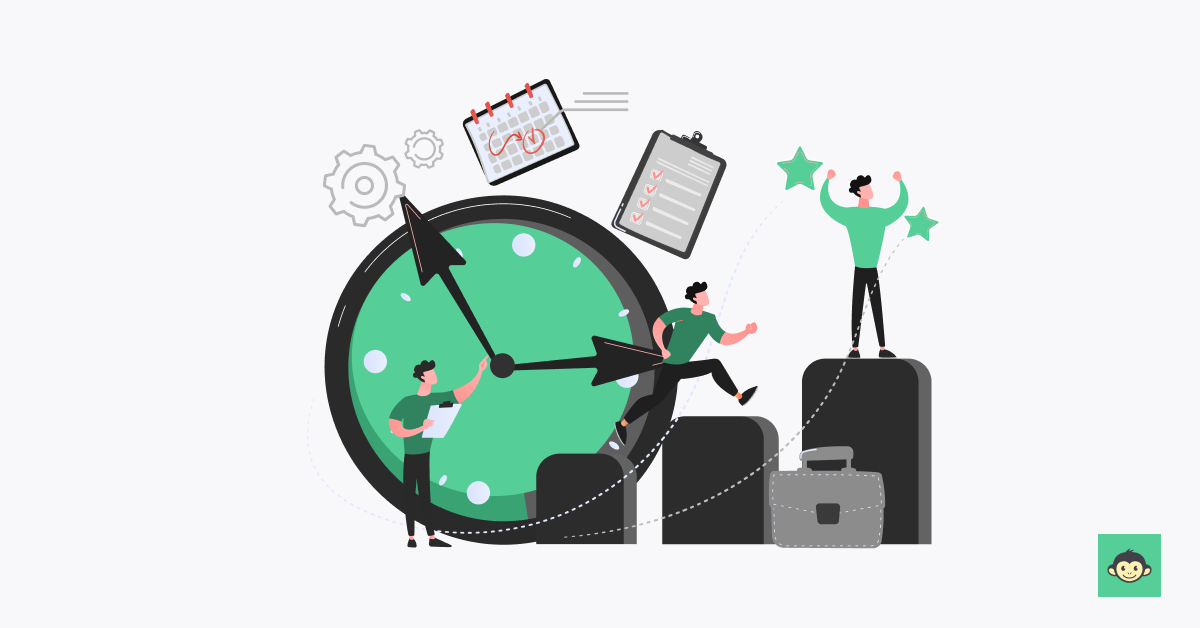
In today’s competitive business landscape, organizations recognize the importance of employee experience management software and its impact on their bottom line and their overall culture. Here are 8 key benefits of employee experience management software:
- Improved engagement and productivity: A employee experience software can help in improving employee engagement and productivity, resulting in better employee performance and increased profitability.
- Increased retention: With the help of employee experience software, companies can reduce employee turnover and retain top talent.
- Improved communication: Employee experience software can help create a company culture of open communication between employees and management, resulting in better understanding, collaboration, and problem-solving.
- Higher morale: When employees feel valued, they’re more likely to be motivated and have higher morale. This can help to create a positive workplace environment.
- Enhanced brand reputation: Positive employee experiences can help to create a positive reputation for your organization, which can help to attract new customers and talent.
- Improved recruitment: A employee experience software can make your organization more attractive to potential job candidates, helping you to fill open positions.
- Increased innovation: A employee experience platform helps to foster a culture of innovation, which can lead to new ideas and products.
- Cost savings: Implementing employee experience management strategies can help to save your organization money by reducing turnover and increasing productivity.
What is an employee experience management strategy?

Ever wondered how top organizations consistently create a positive and engaging workplace for their employees? The secret lies in their employee experience management strategy. But what exactly does an EXM strategy entail, and how can it transform your organization?
- Understanding employee needs: The foundation of any EXM strategy is a deep understanding of your employees' needs and expectations. This begins with surveys, feedback sessions, and open communication to identify pain points and opportunities for improvement.
- Defining clear objectives: A successful EXM strategy sets clear objectives and goals. What do you want to achieve with your employee experience initiatives? Improved employee retention rates, higher engagement levels, or enhanced productivity? Define your goals upfront.
- Mapping the employee journey: Just as a customer journey map helps businesses understand customer interactions, an employee journey map visualizes every touchpoint an employee has with your organization, from recruitment to offboarding.
- Personalizing the experience: Recognize that every employee is unique. Tailor your initiatives to cater to different needs, preferences, and career aspirations. Personalization can include flexible work arrangements, customized training, or recognition programs.
- Continuous feedback loop: Create a culture of continuous feedback. Regularly collect and analyze feedback from employees to gauge the effectiveness of your initiatives and make necessary adjustments.
- Implementing solutions: Based on your insights and feedback, implement employee experience solutions that address identified issues and improve the overall employee experience. This may involve changes in policies, processes, or workplace design.
- Leadership buy-in and accountability: Your EXM strategy must have the support of leadership. Leaders should actively champion and model the desired employee experience. Hold leaders accountable for their role in creating a positive workplace.
- Technology integration: Leverage technology to streamline EXM efforts. Use digital employee experience platforms for feedback collection, employee engagement measurement, and communication.
- Measurement and evaluation: Establish key performance indicators (KPIs) to track the impact of your EXM strategy. Regularly evaluate your initiatives to ensure they align with your objectives and are driving positive change.
- Iterative improvement: Remember that an EXM strategy is an ongoing process. Continuously iterate and improve based on evolving employee needs, market trends, and organizational goals.
What are the key stages of the employee experience?

Being mindful of the employee experience is essential for businesses looking to build a positive culture, improve retention, and increase productivity. Here, we’ll look at the key stages of implementing employee experience software and how businesses can ensure they’re creating an effective and enjoyable workplace.
Hiring and onboarding
The hiring and onboarding process sets the tone for the entire employee experience. When businesses ensure they’re hiring the right people, they’ll have greater success in retaining them and helping them develop. Creating a structured onboarding process that introduces new employees to the organization’s culture, values, and processes is important.
Development and learning
Development and learning are essential for any employee experience software. Employees should be given the opportunity to develop their skills and knowledge, as well as their understanding of the industry and the organization. This could include formal training, mentorship programs, and other initiatives. It’s important to provide employees with the necessary resources and support to succeed.
Recognition and appreciation
Employee recognition and appreciation are an integral part of the employee experience platform. It’s essential for businesses to show their employees that their hard work is being noticed and valued. This could include formal employee recognition programs or simply taking the time to thank you and show appreciation for a well-done job.
Engagement and culture
Engagement and culture are key components of the employee experience platform. It’s essential for businesses to create an environment where employees feel supported and connected to the organization. This could include providing opportunities for employees to engage with each other, such as social activities, team-building exercises, and volunteering initiatives.
Retention and growth
Retention and growth are the final stages of the employee experience. Businesses should strive to create an environment where employees feel valued and motivated to stay with the organization. This could include providing competitive compensation and benefits, offering career advancement opportunities, and recognizing and rewarding employees for their hard work.
Employee experience challenges in 2023

Picture this: It's 2023, and the workplace landscape is evolving faster than ever. The question is, are you prepared to tackle the employee experience challenges that come with it? Let's dive into the top 10 hurdles organizations are facing this year:
Hybrid work models:
Challenge: Balancing remote and in-office work to meet employees' preferences while maintaining collaboration and productivity.
Solution: Create flexible policies and leverage technology for seamless communication and remote work management.
Mental health and well-being:
Challenge: Addressing the growing concerns around employee mental health in the wake of ongoing global challenges.
Solution: Implement mental health programs, provide resources, and encourage open conversations about well-being.
Digital transformation:
Challenge: Navigating the digital transition, ensuring accessibility, and maintaining security in an increasingly tech-driven workplace.
Solution: Invest in training, cybersecurity measures, and user-friendly technology.
Diversity, Equity, and Inclusion (DEI):
Challenge: Achieving true DEI by fostering inclusivity and eliminating bias in hiring, promotions, and everyday interactions.
Solution: Develop DEI initiatives, training, and hold leaders accountable for promoting inclusivity.
Retention and turnover:
Challenge: Retaining top talent as competition for skilled workers intensifies.
Solution: Focus on career development, recognition, and creating a positive workplace culture.
Employee burnout:
Challenge: Combating burnout caused by blurred boundaries between work and personal life.
Solution: Encourage employees to take breaks, set clear work hours, and promote work-life balance.
Remote onboarding:
Challenge: Onboarding new hires effectively in a remote or hybrid work setting.
Solution: Develop comprehensive virtual onboarding programs and mentorship opportunities.
Feedback culture:
Challenge: Building a culture of continuous feedback and improvement.
Solution: Encourage regular feedback through surveys, one-on-one meetings, and anonymous channels.
Leadership development:
Challenge: Developing strong, adaptable leaders capable of leading remote teams and fostering a positive workplace culture.
Solution: Invest in leadership training and mentorship programs.
Change management:
Challenge: Managing the constant changes in the workplace and helping employees adapt.
Solution: Communicate changes transparently, provide resources, and involve employees in the decision-making process.
The business impact of employee experience
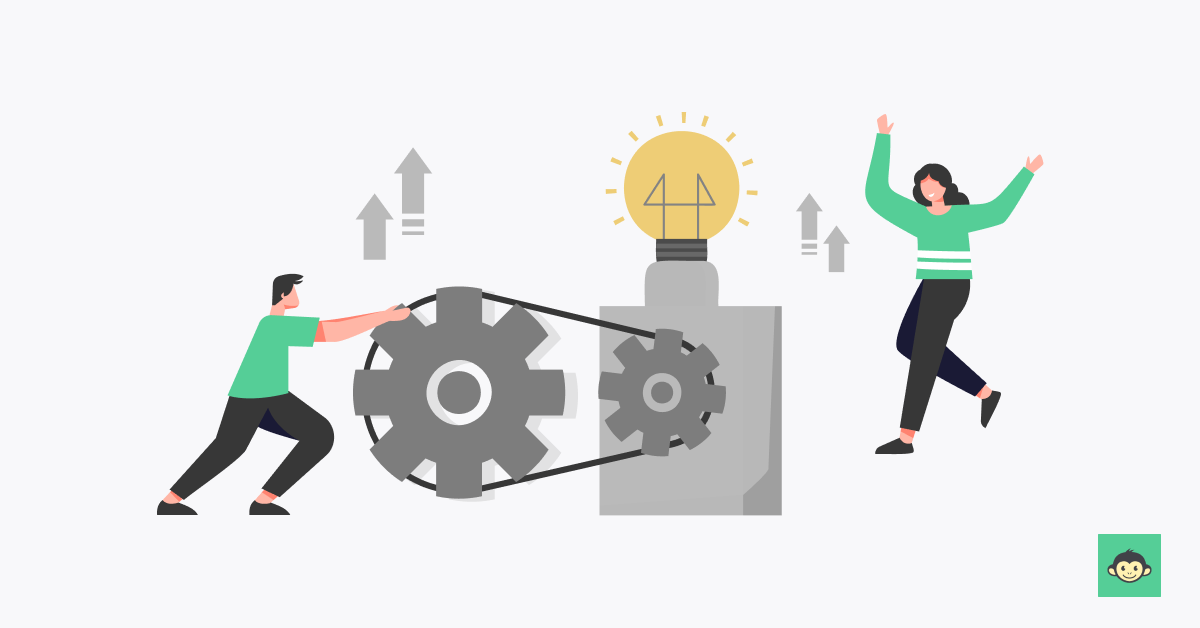
Have you ever wondered why some companies thrive while others struggle? Often, it comes down to the one thing that can make or break a business: employee experience. In this ever-evolving business landscape, understanding how employee experience impacts your organization is essential.
Let's explore how both positive and negative employee experiences can shape the fate of your business.
Positive employee experience:
- Enhanced productivity: Engaged and satisfied employees are more likely to go above and beyond their job descriptions. They're driven by a sense of purpose and a commitment to the company's success, resulting in higher productivity levels.
- Lower turnover rates: When employees feel valued, supported, and connected to their work, they're less likely to seek opportunities elsewhere. This leads to reduced turnover rates, saving your organization both time and money on recruitment and training.
- Increased innovation: A positive employee experience fosters a culture of creativity and innovation. Happy employees are more likely to share ideas, collaborate, and take calculated risks, driving the organization forward.
- Improved customer satisfaction: Employees who have a positive experience are more likely to deliver exceptional customer service. Satisfied employees are often more engaged with customers, resulting in increased customer loyalty and satisfaction.
Negative employee experience:
- High turnover costs: A negative employee experience can lead to higher turnover rates, which can be costly in terms of recruitment, training, and lost productivity.
- Reduced productivity: Disengaged or unhappy employees are less motivated to perform at their best. This can result in decreased productivity and missed business opportunities.
- Negative reputation: A poor employee experience can tarnish your company's reputation. Former employees may share their negative experiences on social media or job review websites, making it challenging to attract top talent.
- Lower customer satisfaction: Employees who are disengaged or unhappy are less likely to provide excellent customer service, which can negatively impact customer satisfaction and loyalty.
In essence, the business impact of employee experience is profound. A positive experience can drive growth, innovation, and customer satisfaction, while a negative one can lead to increased costs, lower productivity, and a damaged reputation. It's not just about employee happiness; it's about the overall health and success of your organization.
How to improve employee experience?

Employee experience combines an employee's engagement with the organization, their personal development and the organization’s culture, values and goals. Improving employee experience has become a priority for many organizations, as happy employees tend to be more productive, engaged, and loyal.
Here are ten pointers to help improve employee experience:
Focus on communication
One of the best ways to improve employee experience is to focus on communication. This means providing clear expectations and setting up regular meetings with employees to ensure everyone is on the same page.
Create a positive work environment
Creating a positive work environment is essential for any organization. This means ensuring employees have a safe and supportive workplace where they can feel comfortable and productive. This can be achieved by providing healthy snacks and beverages, comfortable seating, and access to natural light.
Recognize and reward employees
Recognizing and rewarding employees for their hard work and dedication is a great way to improve the employee experience. This could be done through an employee of the month program or annual award ceremonies where employees are recognized for their achievements.
Offer flexible working arrangements
Offering flexible working arrangements is becoming increasingly popular among employers. This could include allowing employees to work remotely or flexible hours to accommodate their personal commitments.
Encourage professional development
Professional development is important for any employee and should be encouraged in the workplace. This could involve providing access to training courses or allowing employees to attend conferences or other events.
Provide opportunities for growth
Offering employees the opportunity to grow and develop within their roles is a great way to improve the employee experience. This could involve offering promotion opportunities or the chance to take on different responsibilities.
Encourage work-life balance
Work-life balance is essential for any employee, and providing employees with the opportunity to take some time away from work is important. This could involve encouraging vacation time or offering flexible working hours.
Promote a healthy lifestyle
Promoting a healthy lifestyle is important for any employee, and employers should encourage this. This could involve providing access to gyms or offering healthy snacks in the workplace.
Foster collaboration
Collaboration is essential for any workplace, and employers should ensure employees can work together. This could involve providing collaborative workspaces or encouraging employees to share ideas.
Listen to employee feedback
Listening to employee feedback is essential for any organization. This could involve setting up regular meetings to discuss employees’ needs and concerns or providing a platform for employees to share their ideas.
How to design your employee experience strategy?

An effective employee experience strategy helps to create a better atmosphere for employees and makes them feel valued. Here are the crucial steps to effectively implement employee experience management software:
- Understand the need: Analyze the current state of employee experience in your organization, identify gaps and understand the needs of employees. This can be done through surveys and interviews with employees.
- Set objectives: Define the objectives of your employee experience software. Consider aspects like increased employee engagement and productivity, improved retention, enhanced satisfaction, etc.
- Design employee experience: Create a design that reflects your objectives and the needs of the employees. This could include creating engaging work environments, investing in employee wellness, designing efficient onboarding processes, etc.
- Implement and monitor: Implement the design and monitor its progress at regular intervals. Collect honest employee feedback from employees and make necessary changes as needed.
- Analyze and take action: Regularly analyze the employee experience software results to identify improvement areas. Take action to address any issues identified and continue to enhance the employee experience.
- Communicate: Make sure to communicate the strategy to employees and keep them updated on any changes or developments. This will ensure that employees are aware of the goals and objectives of the strategy.
Types of employee experience surveys
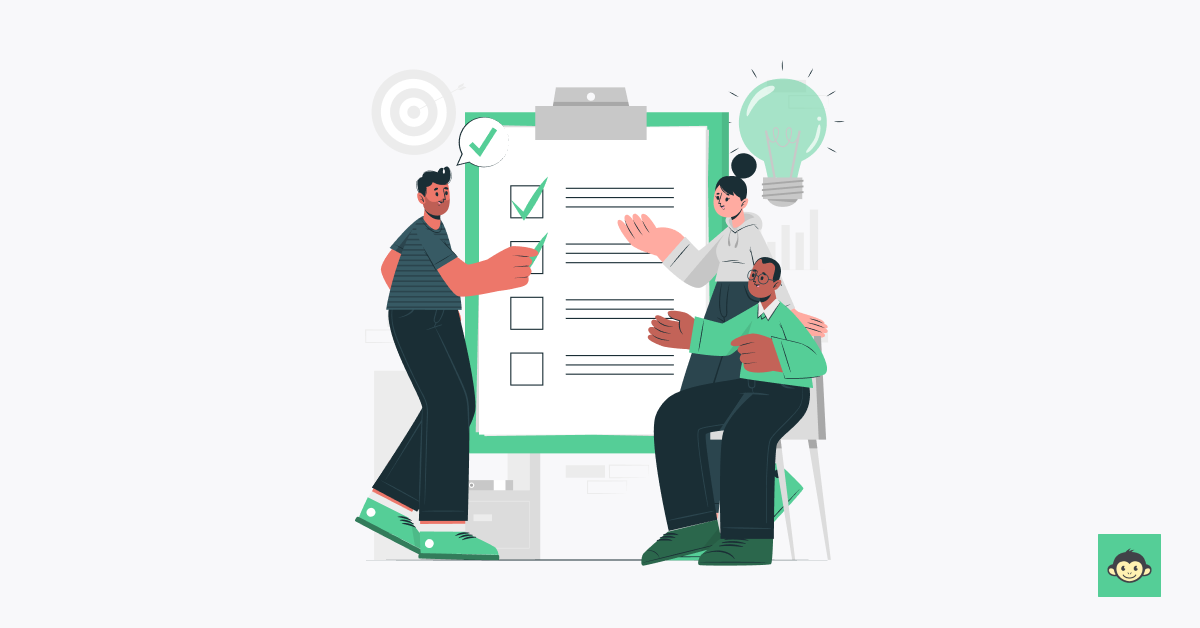
Several employee surveys can be used to measure employee recognition and satisfaction, each with its unique benefits. The following surveys provide valuable insight into employees' feelings about their jobs, colleagues, and the company.
Onboarding survey
Onboarding surveys are a great way to assess how well an employee is experiencing their onboarding process. This type of survey can help identify any improvement areas in the onboarding process and ensure new employees feel comfortable and supported in their new roles. Onboarding surveys can also help to measure the effectiveness of onboarding materials, such as training resources or new hire orientation.
Employee engagement survey
Employee engagement surveys provide valuable, real time feedback on how employees feel about their job, the company, and their colleagues. It can also help to identify areas of improvement in the workplace, as well as identify any potential sources of employee dissatisfaction.
Pulse survey
Pulse surveys help measure the overall satisfaction of employees at any given time and identify any areas of dissatisfaction. Pulse surveys can also be used to track changes in employee performance over time, which can be a valuable tool in assessing the effectiveness of any workplace initiatives.
Feedback survey
This type of survey can be used to measure employee satisfaction at different stages of their employment, such as when they first join the company, when they receive a promotion, or when they leave the company. Feedback surveys can also be used to measure the effectiveness of any workplace initiatives and provide insight into any areas of improvement.
Life cycle survey
Employee life cycle surveys can provide valuable insight into how employees feel at each stage of their employment and can help identify any improvement areas. Employee life cycle surveys can also be used to track any changes in employee satisfaction over time, which can be a valuable tool in assessing the effectiveness of any workplace initiatives.
Exit survey
This type of survey can provide valuable feedback on why employees are leaving the company and any areas of dissatisfaction. Exit interview surveys can also help identify any areas of workplace improvement and potential sources of employee dissatisfaction.
What does an employee experience manager do?

- Creating a positive workplace culture: An employee experience Manager plays a pivotal role in shaping the company's culture. They work to develop and promote a culture that aligns with the organization's values and fosters inclusivity, respect, and collaboration.
- Gathering and analyzing feedback: They're the ears and eyes of the organization, constantly collecting feedback from employees through surveys, interviews, and informal conversations. They use this feedback to identify areas for improvement.
- Designing employee programs: Based on the feedback, employee experience managers design programs and initiatives that enhance the workplace experience. This could include wellness programs, mentorship initiatives, or recognition programs.
- Onboarding and integration: They ensure that new employees have a seamless onboarding experience, helping them feel welcomed and integrated into the company's culture and processes.
- Career development: Employee Experience Managers work on creating opportunities for growth and development. This includes organizing training, workshops, and career progression plans.
- Work-life balance: They promote policies and practices that help employees maintain a healthy work-life balance, reducing burnout and stress.
- Change management: In times of change, such as mergers or restructuring, they facilitate smooth transitions and help employees adapt to new situations.
- Recognition and rewards: Employee Experience Managers develop systems for recognizing and rewarding employees for their contributions, boosting morale and motivation.
- Employee well-being: They're often involved in programs that support mental and physical well-being, ensuring that employees are healthy and happy.
- Data-driven decision-making: Through data analysis, Employee Experience Managers make informed decisions about strategies and improvements. They track the impact of their initiatives and adjust as needed.
- Employee engagement initiatives: Employee Experience Managers develop and oversee engagement initiatives like team-building activities, social events, and surveys to measure and boost employee engagement. They strive to create a sense of belonging and connection among team members.
- Conflict resolution and mediation: When workplace conflicts arise, Employee Experience Managers step in as mediators. They facilitate open and constructive dialogues, helping employees resolve issues and maintain positive working relationships.
- Diversity, Equity, and Inclusion (DEI) advocacy: In today's diverse workforce, promoting DEI is crucial. Employee experience managers champion DEI initiatives, ensuring that the workplace is inclusive, diverse, and free from bias. They work on strategies to attract, retain, and support a diverse talent pool.
Employee experience manager qualifications

Let's explore the qualifications and attributes that make an effective employee experience manager:
Educational background:
While there's no one-size-fits-all educational requirement, many employee experience managers hold bachelor's or master's degrees in fields such as human resources, organizational psychology, business administration, or related disciplines. These educational backgrounds provide a strong foundation.
Experience in HR or related roles:
Practical experience in human resources or related roles is invaluable. This experience helps employee experience managers understand HR processes, labor laws, and organizational dynamics, enabling them to navigate complex employee relations effectively.
Communication skills:
Effective communication is essential. Employee experience managers should excel in both written and verbal communication, as they often need to convey ideas, collect feedback, and facilitate open dialogues among employees and leadership.
Empathy and listening skills:
Being able to empathize with employees and actively listen to their needs and concerns is crucial. Empathy fosters trust and helps Employee Experience Managers create solutions that truly address employees' well-being and satisfaction.
Analytical and data-driven:
The ability to analyze data and derive insights is increasingly important. Employee experience managers often use metrics and feedback data to identify trends, track progress, and make informed decisions to improve the employee experience.
Change management expertise:
Employee experience managers should be skilled in change management. As workplaces evolve, they need to guide organizations and employees through transitions, ensuring smooth adjustments and maintaining a positive experience.
Tech-savvy
Familiarity with HR technology and data management tools is advantageous. Many employee experience initiatives involve digital platforms for feedback collection, performance management, and communication.
How technology enhances employee experience management?

Technology has the power to revolutionize the employee experience as it can help streamline processes and make life easier for employees in many ways. Here are a few ways that describe how technology enhances employee experience:
- Automated data collection: Technology can help streamline the process of collecting employee feedback and insights, making it easier for managers to get a comprehensive view of how employees feel about their work experience.
- Simplified communication: Tools such as instant messaging, video conferencing, and employee portals can help managers quickly communicate updates while providing employees an easy way to reach out with questions or concerns.
- Improved collaboration: Platforms such as cloud-based collaboration tools can allow employees to work together, regardless of physical location, to solve problems and achieve organizational goals.
- Enhanced analytics: Technology can also enable managers to gain deeper insights into employee experience management software. By leveraging employee data and analytics, managers can better understand employee sentiment and identify areas for improvement.
- Increased engagement: Through automated surveys, organizations can quickly and accurately gain insight into how employees feel about their work experience and take the necessary steps to increase engagement.
Conclusion
Employee experience management software is key to creating a positive and productive work environment. It helps to ensure that employees feel valued and appreciated, which leads to higher employee engagement, retention, and loyalty.
Here's where CultureMonkey helps organizations to measure the employee experience and get the required employee anonymous feedback to plan the strategy from their employees through tailor-made employee engagement surveys.
CultureMonkey is the perfect solution for companies looking to increase workplace engagement and retention. It offers a unique approach to gathering employee anonymous feedback, utilizing science-backed employee survey questions in order to get valuable insights.
With this data, people leaders and HR professionals can develop a successful company culture that encourages employee engagement and retention.
Employee experience management FAQs
How employee experience management works?
Employee experience management is a process of creating an environment for employees to be engaged, productive and fulfilled. It involves understanding and managing employee perceptions, behaviour, feedback and expectations from the employer. It fosters a positive culture, provides meaningful career development opportunities, and creates effective performance management systems.
What are the key pillars of employee experience?
The key pillars of employee experience are job satisfaction, work environment, career development, recognition and rewards, communication and feedback, health and wellbeing, and purpose and meaning. These elements create an environment where employees feel valued, respected, and motivated to do their best. Employers can create an engaging and positive workplace by focusing on these pillars.
What are the stages of employee experience?
The stages of employee experience are onboarding, engagement, development, retention, and off-boarding. These are important because they help to create a positive employee experience, which is essential for attracting and retaining top talent, while also helping to improve employee morale, engagement, and productivity, which leads to better performance and overall business success.
What makes a good employee experience?
A good employee experience is one that is rewarding, engaging, and meaningful. Employees should be given clear communication, supportive management, and opportunities for growth. They should feel valued and appreciated, with creative work and a sense of accomplishment. Employees should have the chance to learn, develop, and experience a sense of purpose and satisfaction.
How do you build good employee experience?
Creating a positive employee experience starts with investing in employee development and creating a collaborative team engagement can help foster a positive work environment. CultureMonkey's employee engagement platform, employers can identify the areas of concern within their organization and provide insights to take appropriate action to build better employee experiences.
What is employee experience management?
Employee experience management (EXM) is a holistic approach that focuses on creating a positive and fulfilling work environment for employees. It encompasses all aspects of an employee's journey within an organization, from recruitment and onboarding to daily work experiences, career development, and offboarding. EXM aims to improve the overall well-being, engagement, and satisfaction of employees.
How to improve employee experience management?
Improving employee engagement and experience management involves several key steps. First, gather employee feedback regularly to identify pain points and areas for improvement. Next, develop tailored initiatives such as wellness programs, career development opportunities, and recognition programs. Foster a positive workplace culture by promoting diversity, equity, and inclusion (DEI) and maintaining open communication.
What are the benefits of employee experience management?
The benefits of employee experience management are numerous. A positive employee experience increases productivity, higher retention rates, enhanced innovation, and improved customer satisfaction. It can also reduce turnover costs and contribute to a positive corporate reputation. Ultimately, a well-managed employee experience strategy leads to a more engaged, motivated, and loyal workforce.
Employee experience vs. employee engagement: What's the difference?
Employee Experience (EX) and Employee Engagement (EE) are related but distinct concepts. EX encompasses the overall journey of employees within an organization, focusing on their entire work experience. EE, on the other hand, specifically measures the level of commitment, enthusiasm, and dedication employees have towards their work and employer.



